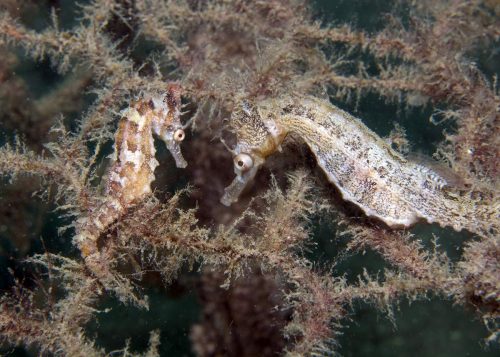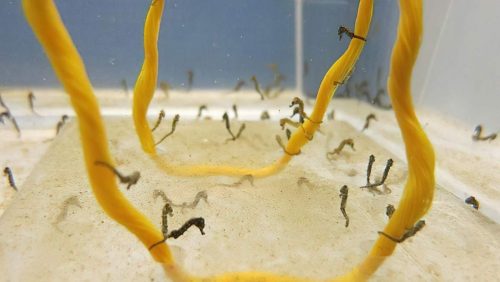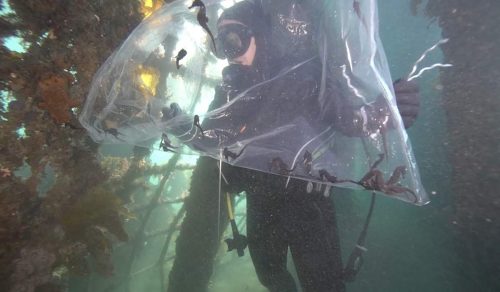Chowder Bay, Australia —(Map)
In a world-record effort to help save a rare sea creature, Australian scientists have released hundreds of baby seahorses into the wild. The tiny seahorses are endangered, and the scientists hope the new seahorses will help their numbers grow.
Seahorses are small, thin fish with a long snout. They’re called “seahorses” because they look a bit like horses. Even though they’re fish, seahorses aren’t great swimmers. They often use their tail to hold onto something in the water.
There are over 40 different kinds of seahorses. They mostly live in warm, shallow waters around the world. They are often found in coral reefs, in beds of seagrass, and areas where rivers empty into the sea. Seahorses form an important part of the ocean’s food chain. They eat tiny sea creatures and are eaten by bigger sea animals, such as crabs.

(Source: David Harasti, SIMS.)
Many kinds of seahorses are threatened, often by the actions of humans. Sometimes they’re caught and sold as pets. They are also sometimes caught by accident when boats are trying to catch other fish.
The seahorses released on July 18 were White’s seahorses, which are mainly found near Sydney, Australia. In 2020, these seahorses were named the second most endangered kind of seahorse in the world. That’s partly because of pollution, and partly because many of the areas where they normally live, like seagrasses and corals, have been lost.
Seahorses are unusual because it’s the males who carry the babies. Males have a special pouch that allows them to carry over 100 babies at a time. The tiny babies are born alive and can swim right away. When they’re born, the babies are about the size of a grain of rice.

(Source: SIMS.)
To begin the project, scientists collected three pregnant male seahorses in January. Those seahorses were brought back to the aquarium at the Sydney Institute of Marine Science (SIMS).
After the babies were born, the scientists kept them at the aquarium for five months, feeding the baby seahorses tiny shrimp to help them grow strong. Scientist Mitchell Brennan says, “They don’t have a stomach, so they have to eat constantly.”
About a month before the young seahorses were released, the scientists created eight underwater “hotels” for them. The hotels look a little like cages, and provide a safe place for the seahorses to develop. Putting the hotels into the sea early allowed the cages to be covered with small sea life that can help provide food for the seahorses.

(Source: David Harasti, SIMS.)
This is the fifth time the scientists have released seahorses into the area, and this time was a record. Around 380 seahorses were released. The researchers say about 90% of them survived, which is unusually high. The researchers put tiny tags under the skin of many of the seahorses to help track them in the future.
The scientists are hoping that the young seahorses will grow and multiply. Brett Fenton, who works for SIMS, says, “We have high expectations that we’ll see the animals thrive [do well] over the next 12 months.”
😕
This map has not been loaded because of your cookie choices. To view the content, you can accept 'Non-necessary' cookies.
